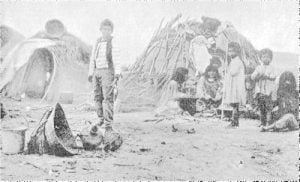D- Arizona Indian Villages, Towns and Settlements
A complete listing of all the Indian villages, towns and settlements as listed in Handbook of Americans North of Mexico. Dueztumac. A former Maricopa rancheria about 45 leagues (120 m.) above the mouth of the Rio Gila in s. w. Arizona; visited by Father Sedelmair in 1744. Bancroft, Ariz, and N. Mex., 366, 1889.

